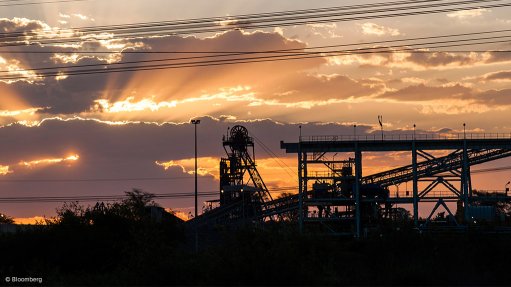
ENGENDERING EFFICIENCY
The new benchmarking method is currently being rolled-out across multiple shafts at Marikana
Photo by: Bloomberg
Platinum miner Lonmin partnered with Pretoria-based engineering company ETA Operations to benchmark the consumption of compressed air at its Marikana operations, in the North West. This was done with the aim of improving operational efficiency and reducing the electricity costs of Lonmin’s compressed-air system, says ETA Operations engineer Willem Schoeman.
Given that compressed air accounts for about 21% of Lonmin’s total electricity costs, mitigating and managing the compressed-air consumption are vitally important, comments Lonmin energy engineer Francois Kock.
Through its partnership with ETA, Lonmin has achieved R25-million in savings. Of that, about R15-million accrued from a reduction in compressed-air consumption.
“Lonmin uses a lot of compressed air . . . its compressors use a lot of energy. The first thing to be done when looking to improve efficiency on a compressed-air system is to establish where the biggest consumers are,” Schoeman states.
He explains that compressed air flow meters are typically used to quantify the consumption of compressed air. However, given the expense of acquiring and maintaining flow meters, as well as the fact that they are not vital to the day-to-day operation of a mine, Lonmin’s Marikana operations had a limited number on site.
ETA devised an innovative method using inexpensive pressure transmitters to measure pressure and use that measurement to estimate flow, thereby enabling Lonmin’s benchmarking exercise, and allowing the company to identify its highest compressed-air consumers.
Combining the flow data with production data has enabled the benchmarking of mining levels in terms of compressed-air consumption.
Shaft engineer of Lonmin’s K3 shaft Isaac Nchupetsang states: “Managing compressed-air consumption for mining levels without flow meters has always been a leap in the dark . . . our joint venture with ETA has taken out the guesswork and has prompted investigations into five levels with abnormally high compressed-air consumption.”
Schoeman says that one of the investigations established that compressed-air was being supplied to an inactive mining area on K3 shaft. The compressed-air pipeline supplying the inactive area was blanked off, resulting in a reduction of 7 000 m3/h. “This is just one example of how the benchmarking of compressed-air consumption resulted in a significant electricity cost saving for Lonmin.”
The new benchmarking method is currently being rolled out across multiple shafts at Marikana.
Schoeman adds that it is noteworthy that these savings were derived without any capital expenditure. “Usually, when people want to save energy they install new equipment such as energy- saving bulbs or other energy efficient equipment. At Marikana, there [have been] no capital costs thus far.”
He says that ETA first looks at methods of, or solutions based on, improving existing operations, rather than procuring and then installing energy efficient equipment.